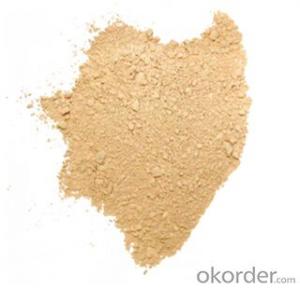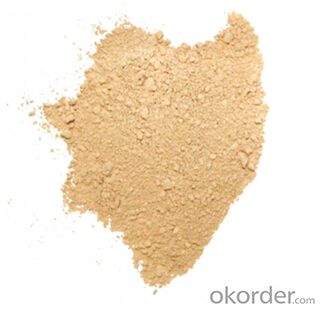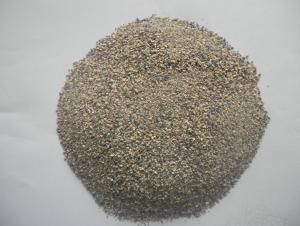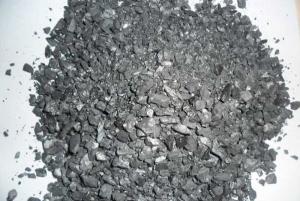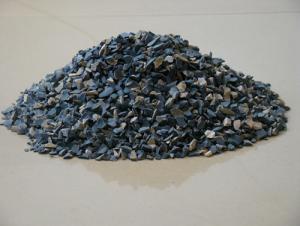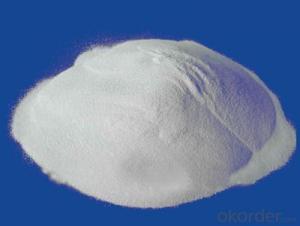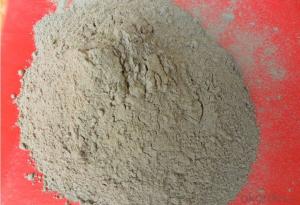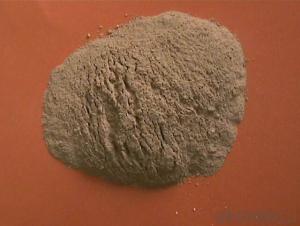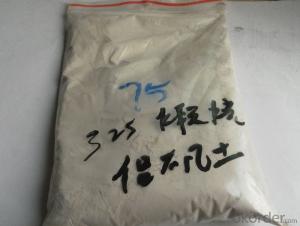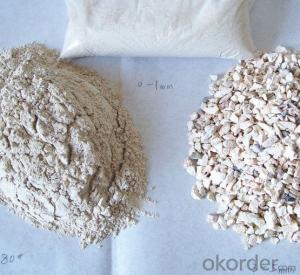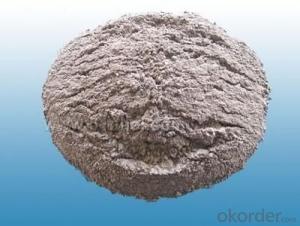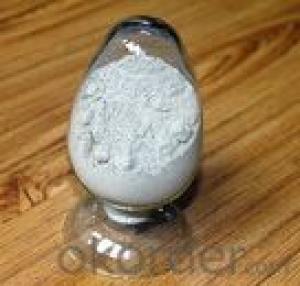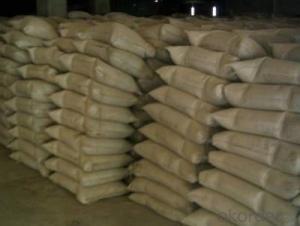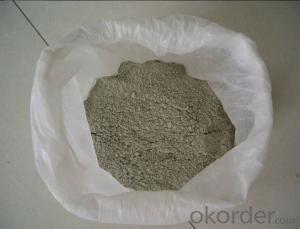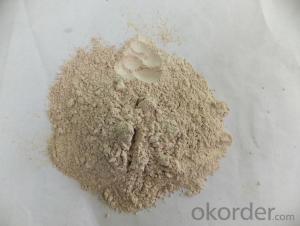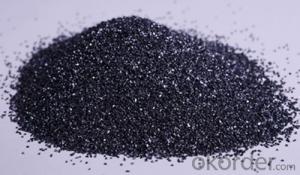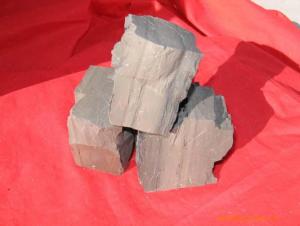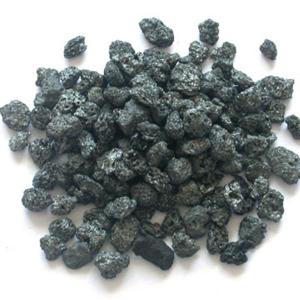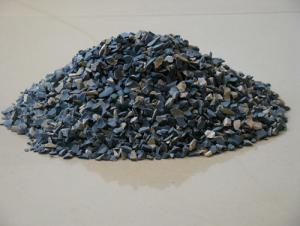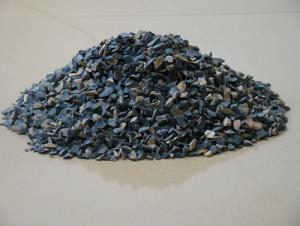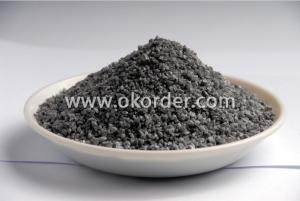Raw Materials for Calcium Aluminate Refractory Mortar
- Loading Port:
- China Main Port
- Payment Terms:
- TT OR LC
- Min Order Qty:
- -
- Supply Capability:
- -
OKorder Service Pledge
OKorder Financial Service
You Might Also Like
Specifications
1.25 years manufacturer
2.Flexible payment
3.Free sample
4.Professional marketing team and after-sale service
1.Ordinary refractory cement CA50
product Performance | CA50-G5 | CA50-G6 | CA50-G7 | |
mineral phase composition | main crystal phase | CA | ||
secondary crystal phase | CA2,C12A7, CT, C2AS | |||
specific surface area(m2/kg) | ≥300 | |||
condensation (minute) | preliminary condensation | ≥30 | ||
final condensation | ≤360 | |||
bending strength (Mpa) | 24hours | 5.5 | 6 | 6.5 |
72 hours | 6.5 | 7 | 7.5 | |
compressive strength (Mpa) | 24 hours | 40 | 45 | 50 |
72 hours | 50 | 55 | 60 | |
application | used as binder to make traditional unshaped refractory material (concrete, refractory gunning material, etc) | |||
product Performance | CA50-G9 | CA50-N | CA50- electric melting | |
mineral phase composition | main crystal phase | CA | CA | CA |
Secondary crystal phase | CA2, C2AS | C12A7, C2AS | C12A7, C2AS | |
specific surface area(m2/kg) | ≥400 | ≥350 | ≥400 | |
condensation (minute) | preliminary condensation | ≥90 | ≥30 | ≥120 |
final condensation | ≤360 | ≤360 | ≤480 | |
bending strength (Mpa) | 6-8hours | - | 4 | 4 |
24 hours | 8 | 6 | 10 | |
72 hours | 10 | 7 | 11 | |
compressive strength (Mpa) | 6-8hours | - | 30 | 30 |
24 hours | 70 | 50 | 75 | |
72 hours | 80 | 60 | 80 | |
application | used as binder to make special unshaped refractory material | |||
1.General Package
Ton Bag, 25kg Fibre Drum, Paper Sack or according to customer demand

2.Shipment Period
5-15days after order
Q1 |
What’s the transport method? |
A1 | FCL delivery goods with wooden pallet or wooden case by sea; If LCL delivery, must with wooden case; Sometimes need open top, flat rack or bulk cargo. |
Q2 |
What’s the required payment term? |
A2 | Generally 30% TT as the prepayment, 70% TT before delivery. If need, 100% Irrevocable Letter of Credit or negotiation. |
Q3 |
Which country are our products exported to? |
A3 | Apart from entire Chinese market, SONGSHAN products have sold to Europe, the US, Russia, Japan, Korea, Australia and some Southeast Asian Nations. |
FACTORY:
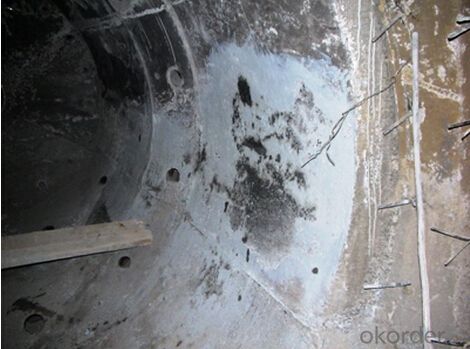
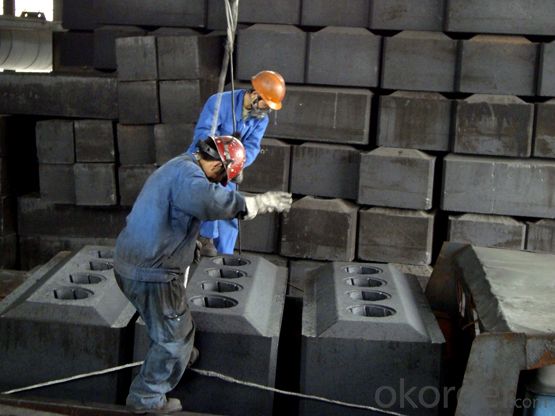
- Q: Can anyone tell me what material the first rate fire resistant door is?
- Class A fire door materials are mainly steel, wood, steel and wood,and other materials. If there is filling material in a Class A fire door, it is generally the perlite. According to the actual situation in China, the fire doors and windows are divided into class A, class B, class C, whose minimum fire endurances are stipulated, namely class A 1.50h, class B 1.00h, Class C 0.50h. There are fireproof wooden doors and fireproof steel doors. whose main purpose is to achieve fire endurance time. But door closers are required to be installed.
- Q: What brands are the best in the A-level refractory materials?
- These brands are good.
- Q: How is the division of the fire resistant level of the rock wool board?
- It's like this: China's national standard GB8624-97 divides the combustion performance of building materials into the following grades. Level A: non-flammable building materials. Level B1: flame-retardant building materials. Level B2: combustible?building?materials. Level B3 flammable building materials. section II Combustion performance and fire endurance of building components. First, The combustion performance of buildings of building components. The building is composed of components, such as foundation, walls, lubrication columns, beams, plates, roofs and stairs, ect. Building components are constituted by the building materials, whose combustion performance depends on the combustion properties of the used construction materials. Section One Combustion performance of building components. The building components are divided into three categories according to their combustion properties. First, non-combustible component: the component made by incombustible?materials. The incombustible?material refers to that when meeting the Oxygen in the air, it will not burn.
- Q: What is the difference in the nature between the refractory material and thermal?insulation?material
- thermal?insulation?material is used to thermal insulation and the transfer of heat insulation. refractory material is defined as greater than 1580 ° non-metallic materials, such as calcium silicate board. its using temperature can reach to 1100 degrees, and some can also be used at high temperatures, and all high-temperature industrial can't be oprated without it, and the using temperature of polycrystalline alumina fibers can reach to 1800 degrees
- Q: Who knows the classifications of magnesia refractory?
- Magnesia chrome series products: The main ingredients of magnesium chromium series are MgO and Cr2O3. Periclase is the first phase and magnesia-chrome spinel is the second phase. Products belonging to this series are magnesium chrome brick and chrome magnesia brick. The main ingredients of magnesium aluminum series are MgO and Al203. As they generate MgO and Al203, all magnesium chromium series products contain magnesia material. magnesium calcium series products The main components are MgO and CaO. They have high melting points, which are important magnesia materials. 5, magnesium silicon series products: The main component of magnesite series is SiO2, when the C / S<5, SiO2 and MgO generate MgO.Al2O3 (forsterite). From the perspective of microscopic mineral, main products of pure aluminum series include magnesium aluminum brick, periclase spinel brick, corundum spinel brick and aluminum-spinel castable in unshaped materials. I hope this answer can help you.
- Q: who knows the uses of refratories?
- Of course, the role of the refractory material is fireproof, generally used in large buildings. It can reduce casualties and economic losses caused by the fire. it also can be used on the chemical instruments. ! !
- Q: What are the construction measures of refractory material in winter? Please descriptive briefly.
- The temperature is low in winter, so refractory bulk materials should be stirred evenly on time to avoid freezing.
- Q: How long is the fire endurance of the rock wool board?
- The rock wool board takes the basalt as raw material and is processed into artificial inorganic fiber through high temperature melting, which is light in weight, non-combustible, heat absorptive, small in thermal conductivity. The initial development in construction is a common type of application used for industrial buildings, which should be consistent with the requirements of "building insulation application categories and basic requirements" . In June 1981 the pre-launch succeeds. The rock wool board is a new type of insulation, burning compartment and sound-absorbing material. Generally the fire resistance of the rock wool board is 140-180 degree within two hours, It is best not to exceed this safe period, in order to avoid security risks.
- Q: What are the differences between intensive refractory busway and other busways?
- Compact busway is named according to its structure, and fire-resistant busway is named after its uses. Compact busway especially refers to busway which is closely laminated between phases and between phase and shell, and use thin insulating material to achieve the insulation result. suitable for power supply system of alternating current three-phase four-wire, three-phase five-wire system, frequency of 50 ~ 60Hz, rated voltage up to 690V, rated operational current of 250 ~ 5000A, as auxiliary equipment for mining, enterprises and high-rise buildings, and especially suitable for the transformation of workshop and old enterprises. Fire-resistant busway is composed of shell coated with fire retardant paint, bus line wrapped with fire-resistant mica tape and bracket made by refractory insulating material. Bracket has a plurality of grooves where inbedding the bus line and fixed it. There is a busway connecting box at one end of the busway and there is a bus line splitter box in the busway. Fire-resistant busway has excellent insulation properties, which can not only be used continuously in a normal environment, but also can be used in the fire environment continuously for more than one hour, suitable for high-rise buildings and important facilities, replacing the fire-resistant cables to transmit and distribute power .
- Q: Does refractory belong to metallurgical auxiliary materials?
- Refractory includes metallurgical auxiliary materials.
Send your message to us
Raw Materials for Calcium Aluminate Refractory Mortar
- Loading Port:
- China Main Port
- Payment Terms:
- TT OR LC
- Min Order Qty:
- -
- Supply Capability:
- -
OKorder Service Pledge
OKorder Financial Service
Similar products
Hot products
Hot Searches
Related keywords
